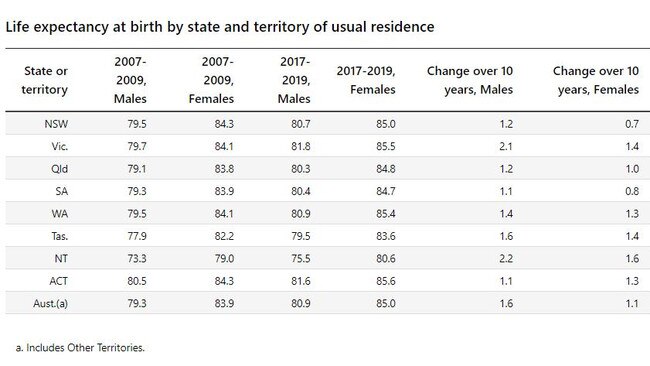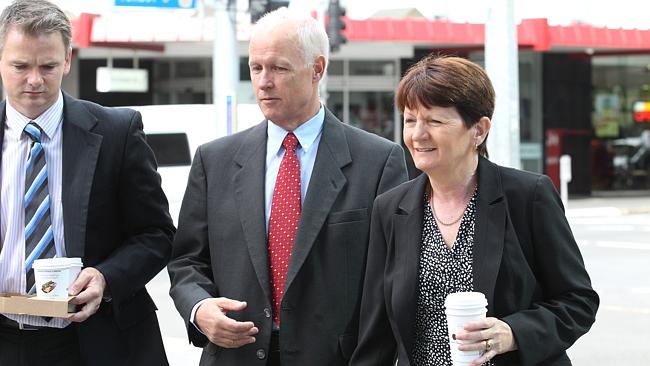Aussie girls can expect to live to 85
Life expectancy for Australian women has reached 85 years, but men are slowly catching up.

Life expectancy for Australian women has reached 85 years for the first time, but men are slowly catching up.
A boy born in Australia today can be expected to live to 80.9 years of age, up 1.6 years over the last decade compared to a 1.1 year increase for girls, the Australian Bureau of Statistics finds.
And Australia’s life expectancy remains higher than countries such as New Zealand, the United Kingdom and the United State, the ABS said.
Australia currently has the sixth highest overall life expectancy in the world at 83 years, behind Japan, Switzerland, Singapore, Spain and Italy.
Australian males have the fifth highest life expectancy, and females the eighth.
“Male life expectancy has increased by 0.2 years since 2016-2018, and by 1.6 years in the past ten years. Female life expectancy has increased by 0.1 years since 2016-2018, and by 1.1 years in the past decade,” ABS Demography Director Lauren Ford said.

Ms Ford said the life expectancy gap between men and women had closed significantly from three decades ago.
In the mid-1960s life expectancy at birth in Australia was 67.6 for males and 74.2 for females, a gap of 6.6 years.
By 1988, the figures had reached 73.1 years for males and 79.5 years for females, a 6.4 year differential.
That gap, on the most recent available figures (2017-2019) is now down to 4.1 years.
Improved life outcomes are the result of better health services, safer working environments an medical and technological advances.
Those who have made it to 50 can bank on a few additional years of life, with a 50-year old male today expected to live another 32.9 years and a female another 36.3 years.
Men do best in Victoria, where the male life expectancy is 81.8 years, compared to NSW at 80.7 years and Queensland at 80.3 years.
Women have never before had an average life expectancy of 85 across the country.
For women, the ACT is the place to be, with female life expectancy sitting at 85.6 years, down to South Australia at 84.7 years and Tasmania at 83.6 years.
The Northern Territory recorded the lowest life expectancy for both males and females (75.5 years and 80.6 years).
But male and female life expectancy in the Northern Territory showed the largest gains of all the states and territories over the last decade (2.2 years and 1.6 years).
Life expectancy at birth estimates represent the average number of years that a newborn baby could expect to live, assuming current age-specific death rates are experienced through a lifetime.
It is generally higher in cities than in remote areas.





To join the conversation, please log in. Don't have an account? Register
Join the conversation, you are commenting as Logout